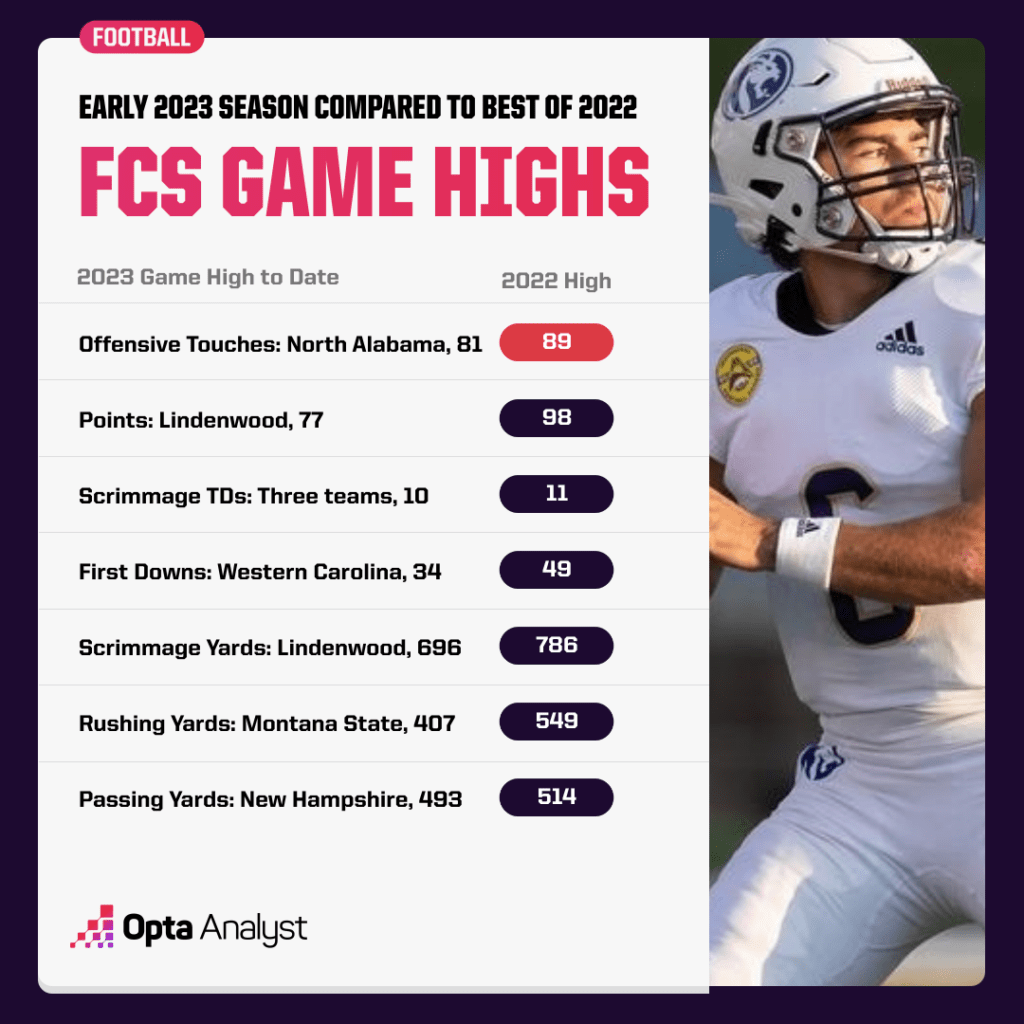Part of The Analyst’s FCS series called “By the Numbers,” which analyzes data to help tell the story of FCS college football.
Hey, football diehards, have you ever wondered why so many college football games end up 45-42 and go 30 or 45 minutes longer than a pro football game? Is it superior offensive play calling? Weaker defenses?
Or could it have been as simple as extending the game in college and allowing for a bunch more plays to be called?
Well, after an NCAA rules change in college football this season, which for the most part has eliminated clock stoppage after an offense attains a first down, fans may have already noticed the games seem faster, and scoring and offensive totals are slightly down. The goal of the rule was to continue the flow of a game, but perhaps it reduces as many as 10 fewer snaps per team per contest. The clock stops, however, for first down placements with less than two minutes remaining in the second and fourth quarters.
Let’s face it, there wasn’t going to be fewer timeouts for commercials, and something had to be done. The FBS, FCS, Division II and Division III levels have already seen the effect take place within the early weeks of the 2023 campaign – the first change with the rule since 1968.
North Alabama ran 81 offensive plays in a loss Tarleton, but it’s the only FCS program to go above 80 this season. Western Carolina had 78 in its big win over ranked Samford last Saturday, the second-highest total to date and one week after Prairie View A&M had 74 snaps against Abilene Christian.
In comparison? North Alabama’s 81 snaps would have ranked only eighth-highest in 2022, when FCS teams ran 75 or more snaps 40 different times.
The trend is real, so let’s look at how it has affected offensive output.
Yes, it’s early in the season, but nobody is expecting the FCS single-season record 60.9 points per game of the 1984 Mississippi Valley State team, the home (and season) of future NFL Hall of Famer Jerry Rice’s senior campaign, to ever happen again. Or UIW’s 51.5-point average and Fordham’s 49.5 last year, which rank second and sixth, respectively, in FCS history. Georgia Southern also rung up 50 per game in 1999 with future NFL running back Adrian Peterson in the backfield (no, not that one).

With this new rule, we may never see another FCS program average 50 points a game. And let’s face it, the NFL doesn’t exactly do that either these days. If a team is scoring 35 points per game, it’s considered an offensive juggernaut.
While it’s early in the season, Tarleton has scored 52 points in back-to-back wins to lead the FCS in scoring with that exact average. New Hampshire, led by running back and returner Dylan Laube – the Swiss Army Knife of the FCS – is second with a 46.5-point average as another of the nine teams (out of 128) which are averaging 40+ points per game.
At this point of the season last year – through the smaller Week 0 schedule and two full weeks of play – there were 15 teams averaging 40+ points, including Arkansas-Pine Bluff at 62 and UIW 59.5 through two games each.
Many FCS schools have played their “cash games” against FBS programs, where they take some gut punches and don’t produce their normal offensive numbers, and others have played sub-Division I opponents and enjoyed offensive explosions.
Regardless, we’re already seeing some trends. The game is being slowed down, and we all know the FCS has some more defensive-minded programs. It will be interesting to see how they utilize the advantages of this 2023 rule.
Also, how will offenses that traditionally chew up the clock more than others in the FCS – like triple-option attacks – deflate some of the big offensive numbers of the past.
It’s quicker games with slightly less offense.
